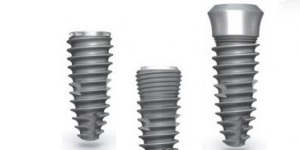
THE COST OF DENTAL IMPLANTS
2015-07-14
انواع ایمپلنت دندان از نظر ساختاری
2015-07-15This work focuses on a titanium alloy implants incorporating a gradient of porosity
from the inner core to the outer surface, obtained by laser sintering of metal powder. Surface appearance, microstructure, composition, mechanical properties and fractography were evaluated
Medical models were built using predominantly stereolithography and fused deposition modeling at both institutions over a period of 6 years. A combined total of 350 models have been produced for a range of maxillofacial, neurosurgical, and orthopedic applications. Stereolithography, fused deposition modeling, computerized numerical milling, and other technologies are described along with computer software requirements
All the specimens were prepared by a selective laser sintering procedure using a Ti–6Al–4V alloy powder with a particle size of 1–10 μm. The morphological and chemical analyses were performed by SEM and energy dispersive X-ray spectroscopy. The flexure strength was determined by a three-point bend test using a universal testing machine. The surface roughness was investigated using a confocal scanning laser microscope. The surface roughness variation was statistically evaluated by use of a Chi square test. A p value of <0.05 was considered statistically significant
The original surface microstructure consisted of roughly spherical particles, diameter range 5–50 μm. After exposure to hydrofluoric acid some of these were removed and the microsphere diameter then ranged from 5.1 μm to 26.8 μm. Following an organic acid treatment, particles were replaced by grooves 14.6–152.5 μm in width and 21.4–102.4 μm depth. The metal core consisted of columnar beta grains with alpha and beta laths within the grains. The alloy was composed of 90.08% Ti, 5.67% Al and 4.25% V. The Young’s modulus of the inner core material was 104 ± 7.7 GPa; while that of the outer porous material was 77 ± 3.5 GPa. The fracture face showed a dimpled appearance typical of ductile fracture
In conclusion, laser metal sintering proved to be an efficient means of construction of dental implants with a functionally graded material which is better adapted to the elastic properties of the bone. Such implants should minimize stress shielding effects and improve long-term performanc






